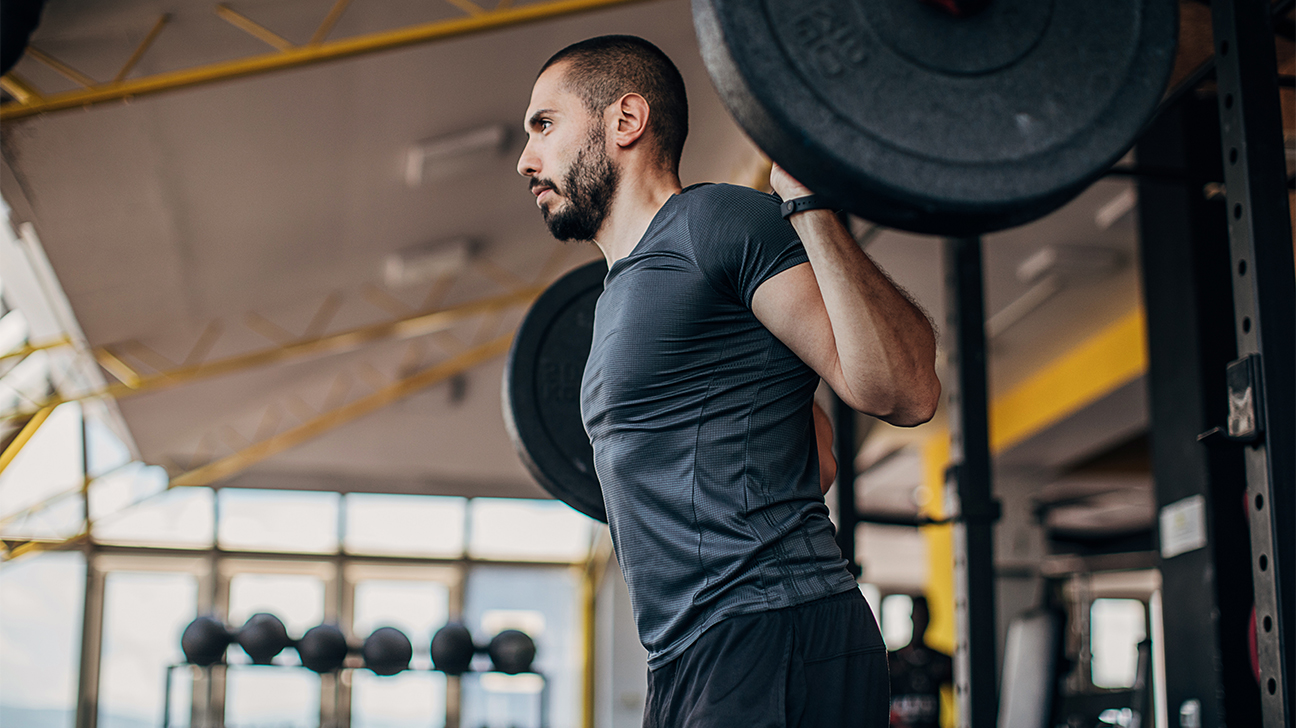The shoulder press is a common exercise that is performed in gyms, used for strengthening the shoulders and upper back. It particularly targets the front part of the shoulder muscle (anterior deltoid) but it also works the deltoids, triceps, trapezius and pecs.
The traditional shoulder press exercise is performed either standing or seated against a bench, and while keeping the legs passive and the trunk fairly still, the shoulders move weights, dumbbells or a barbell, straight up and over the head and back down again in a controlled motion.
This shoulder press movement can be a pretty risky exercise as it is quite an unnatural movement of the shoulders, and the rotator cuffs can suffer damage. Using dumbbells gives you a bit more control than a barbell does, but it is still not ideal and can also put pressure on the neck, even when seated.
While the technique is really good for isolating the shoulder muscles, it isn’t functional, as in our daily life we instinctively move our feet, knees, hips and truck to help us when we need to move heavy weights above our heads. Functional exercises aim to train the body for the typical movements and activities that we perform day to day.
So, it is important that we engage the rest of the body in functional and practical movements when lifting weights. They are known as functional exercises as they are movements that are used in daily life. A functional exercise usually consists of squats or lunges as they are compound exercises – that is they use more than one muscle group to work together. So that means, it’s a more natural movement for the body.
You may not be able to push as much weight as you are used to, however the risk of shoulder injuries is reduced because the body is moving like it is designed to – as opposed to a lot of weight focused solely on the shoulder joint, which is not what it is meant to do. Don’t be put off though – using the appropriate weight and the correct technique, you can still achieve fatigue within the usual rep range and become functionally stronger. Below are 3 exercises to strengthen the shoulder muscles, which can be used instead of the shoulder press. Give them a go.
1. Single Arm Landmine Press with Trunk Rotation:
Slide a barbell into a landmine base or the corner of a wall, with a plate on the end. Load the other end of the barbell (the one you will hold) with the appropriate weight for you. Decide which arm you are going to press with first, clean the bar up to shoulder height and step the opposite leg forward. Tuck your elbow into your side and keep your wrist in line with your forearm. Brace your core and tension your arms, shoulders, back and legs. Keep your head and back straight then press the bar forward – think about reaching your hand forward. As you lower the bar, pull it slowly to you and feel the shoulder blade gliding along the back of the ribcage. Ensure you bend your knees and allow your trunk to rotate forwards and backwards, lifting your back heel to let the front foot pivot – that will assist with overall rotation of your body.
2. Single Arm Dumbbell Shoulder Press with Rear Lunge:
Stand with a dumbbell in one hand at hip height. Engage your core, keeping your back and head straight and keep your weight on the leg that is stationary. Lunge backwards with the opposite leg to the side you are holding the dumbbell, so the knee is brushing the floor. As you come back up, lift that knee out in front while you press the dumbbell straight up and overhead.
You can relate this exercise to an activity such as reaching something up high – if we reach with our right arm, we tend to stand on our left foot as it allows us to elongate the body and balances the weight across our body rather than just on one side.
3. Double Arm Pulley Shoulder Press with Forward Lunge:
Using a pulley machine, hold a cable in each hand, level with your shoulders and face away from the machine. Brace your core and keep your back and head straight. As you move into a forward lunge, raise your arms forward and upwards above your head. As you return to an upright position, bring your arms back into shoulder height. Alternate your lunges from one leg to another.
This can also be performed by alternating single arms, in which case move the arm opposite to the leg you are lunging forward with.
Please remember to seek assistance and support from a qualified trainer before trying new weight exercises so they can check your form. A qualified sports physiotherapist specialises in body movement and injury prevention so book in with an expert to discuss any concerns you have.















Leave a Reply